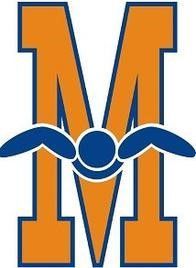METROPLEX AQUATICS ACTION PLAN TO ADDRESS BULLYING
PURPOSE
Bullying of any kind is unacceptable at Metroplex Aquatics and will not be tolerated. Bullying undermines team spirit and can be devastating to its victims. Our team is committed to providing a safe, caring, and supportive environment for all members.
All athletes, parents, and staff should know that incidents of bullying will be addressed promptly and effectively. Anyone aware of bullying is expected to report it to a coach, board member, or designated mentor.
OBJECTIVES
The Metroplex Aquatics Bullying Policy aims to:
- Make clear that bullying will not be tolerated in any form.
- Define bullying and ensure all board members, coaches, parents, and swimmers understand what it is.
- Inform everyone of the policy and protocol for addressing bullying issues.
- Provide a clear, understandable reporting process.
- Reassure swimmers and parents that bullying is taken seriously and that support will be provided when it is reported.
WHAT IS BULLYING?
The USA Swimming Code of Conduct prohibits bullying. Generally, bullying is the use of aggression, intentional or not, that causes harm or distress.
USA Swimming Definition (304.3.7):
Bullying is the severe or repeated use, by one or more members, of oral, written, electronic, or other forms of expression or physical acts directed at another member that a reasonable person would recognize as:
- Causing physical or emotional harm or property damage;
- Placing the other member in reasonable fear of harm or property damage;
- Creating a hostile environment at any USA Swimming activity;
- Infringing on the rights of another member; or
- Materially and substantially disrupting training or team activities.
REPORTING PROCEDURE
Athletes who feel they have been bullied should consider:
- Talking with their parents;
- Speaking with a Team Coach, Board Member, or designated adult;
- Writing a letter or email to a Team Coach, Board Member, or designated adult;
- Reporting the issue to USA Swimming Safe Sport staff.
There is no strict time limit for reporting, but issues should be reported as soon as possible to ensure accurate recall and prompt intervention.
HOW WE ADDRESS BULLYING
1. Stop Bullying on the Spot
If bullying occurs during team activities:
- Intervene immediately; seek help if needed.
- Separate the individuals involved.
- Ensure everyone is safe.
- Address any immediate medical or mental health needs.
- Stay calm and reassure all involved.
- Model respectful behavior during intervention.
2. Determine What Happened
To address bullying effectively:
Gather Facts:
- Keep all parties separate.
- Collect accounts from multiple sources.
- Listen without blaming.
- Avoid labeling the behavior as “bullying” until the situation is understood.
Assess Behavior:
- Review the USA Swimming definition of bullying.
- Consider:
- History between the individuals.
- Past conflicts.
- Power imbalances (not always physical).
- Recurrence and concerns about future incidents.
- Focus on behavior, not “who started it.”
3. Support the Athletes Involved
For the bullied athlete:
- Listen, show support, and assure them it is not their fault.
- Collaborate on ways to resolve the situation while minimizing disruption.
- Maintain ongoing communication with parents and coaches.
- Persistently support the athlete, as bullying may not end immediately.
For the child exhibiting bullying behavior:
- Clearly explain what behavior is unacceptable.
- Model and reinforce respectful behavior.
- Explore reasons behind the bullying (e.g., insecurity, stress, personal issues).
- Encourage making amends, such as:
- Writing an apology letter.
- Performing positive actions for teammates or the team.
- Repairing any damage caused.
- Avoid ineffective or harmful strategies:
- Zero-tolerance or “three strikes” policies.
- Peer mediation for bullying, as it is not a conflict between equals.
- Follow up to reinforce positive behavior and understanding.
4. Support Bystanders
Athletes who witness bullying can help safely by:
- Being a friend to the targeted individual.
- Informing a trusted adult.
- Helping the individual leave the situation.
- Setting a good example by not bullying others.
- Avoiding giving the bully attention; simply walking away is effective.

